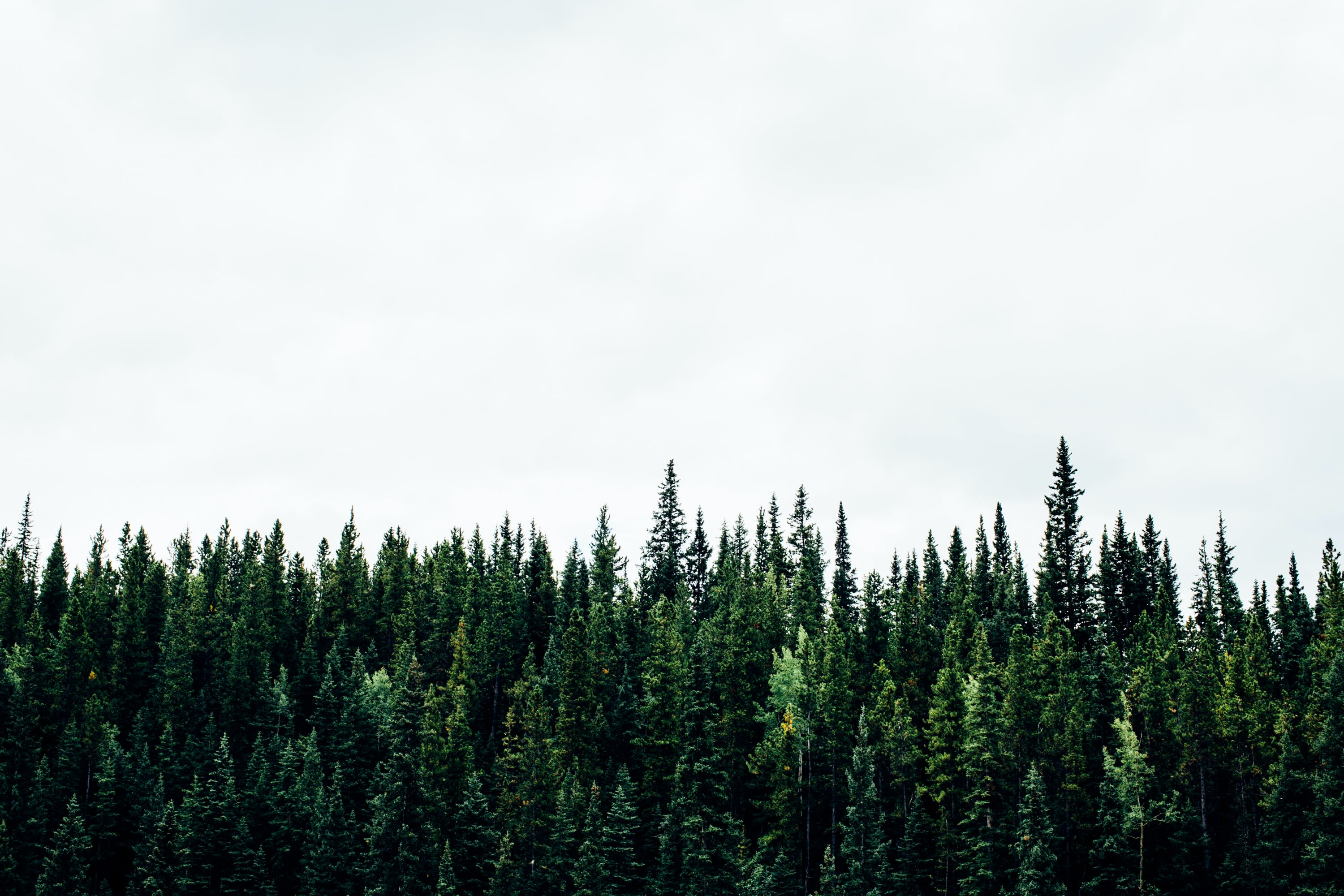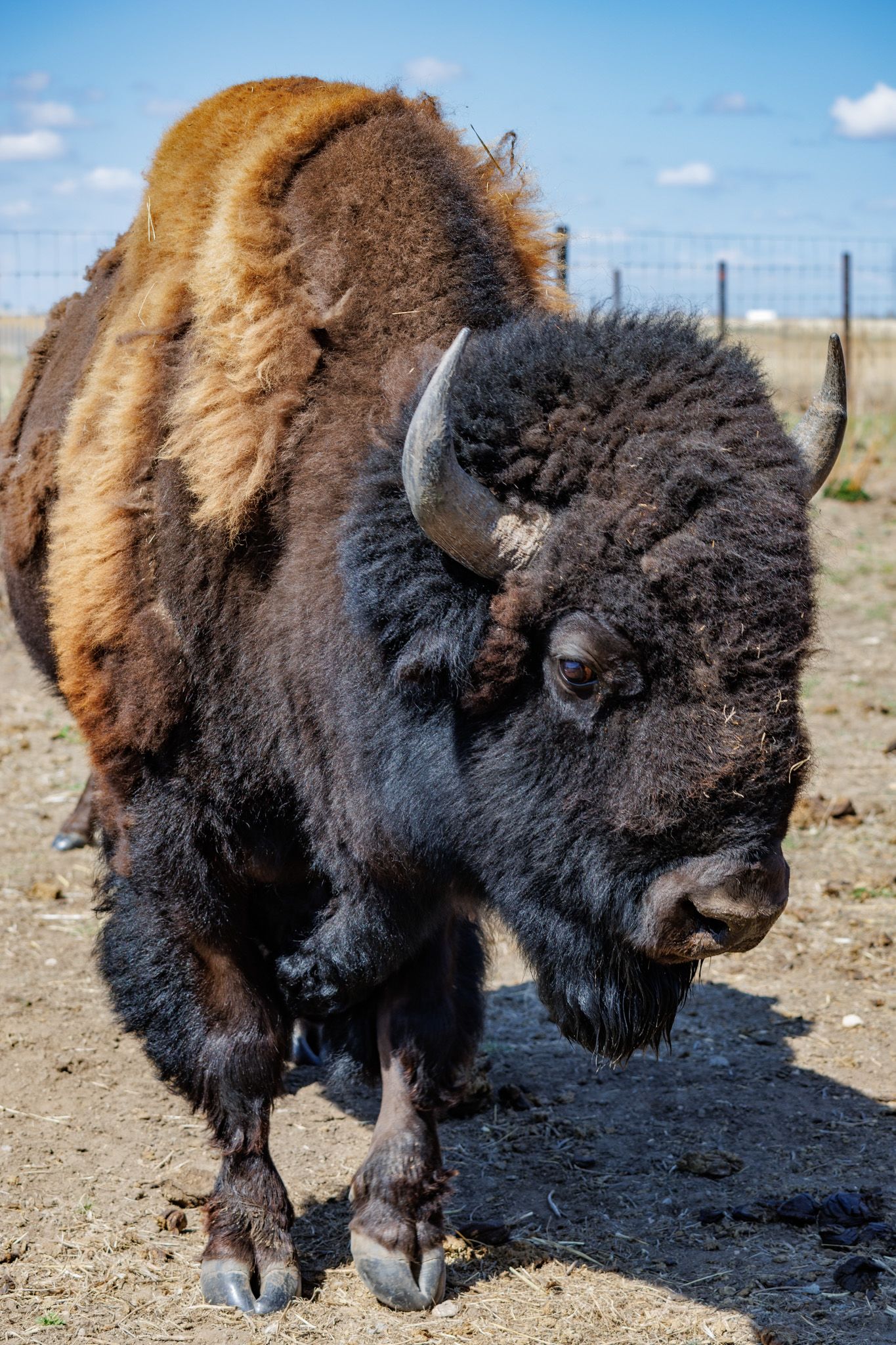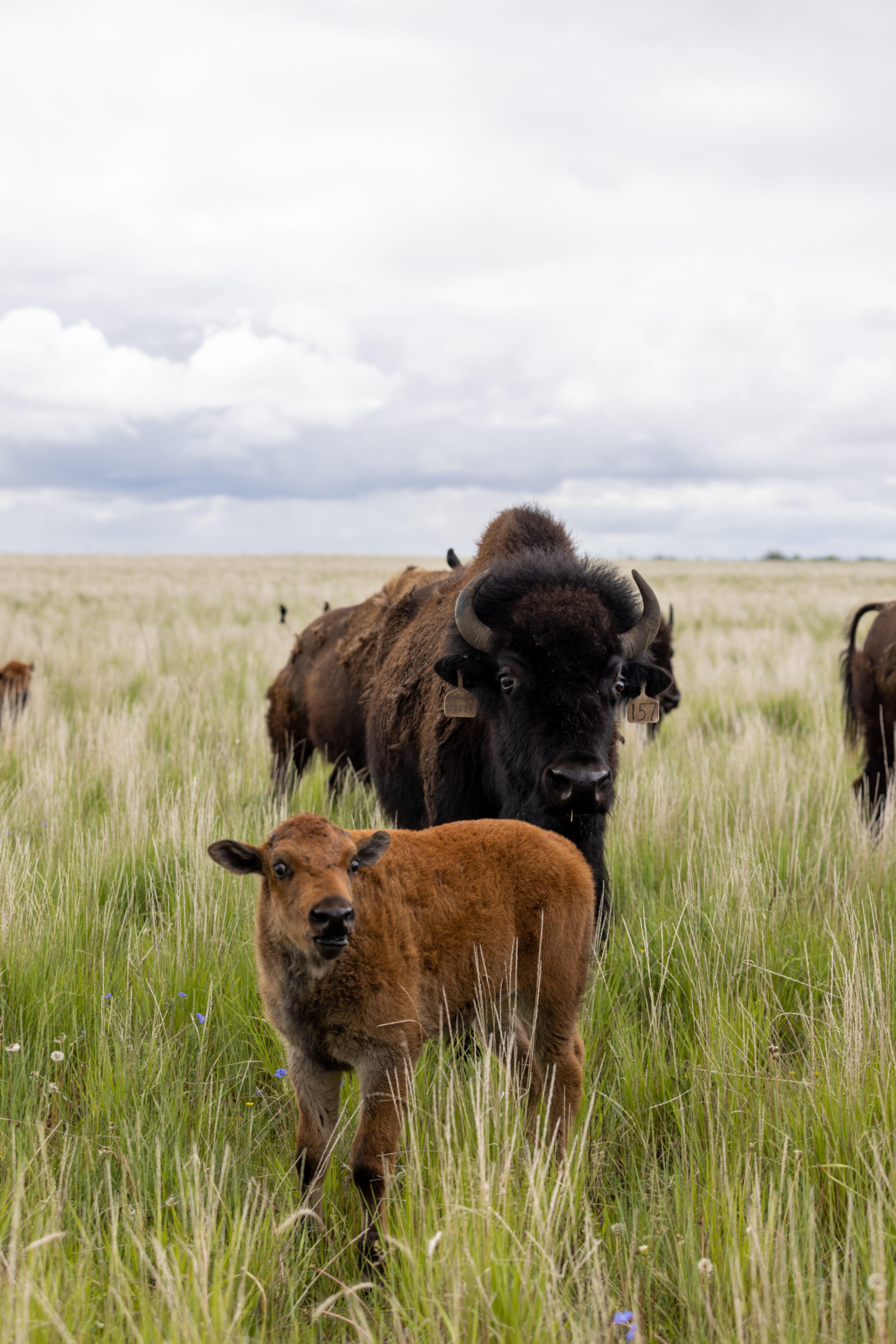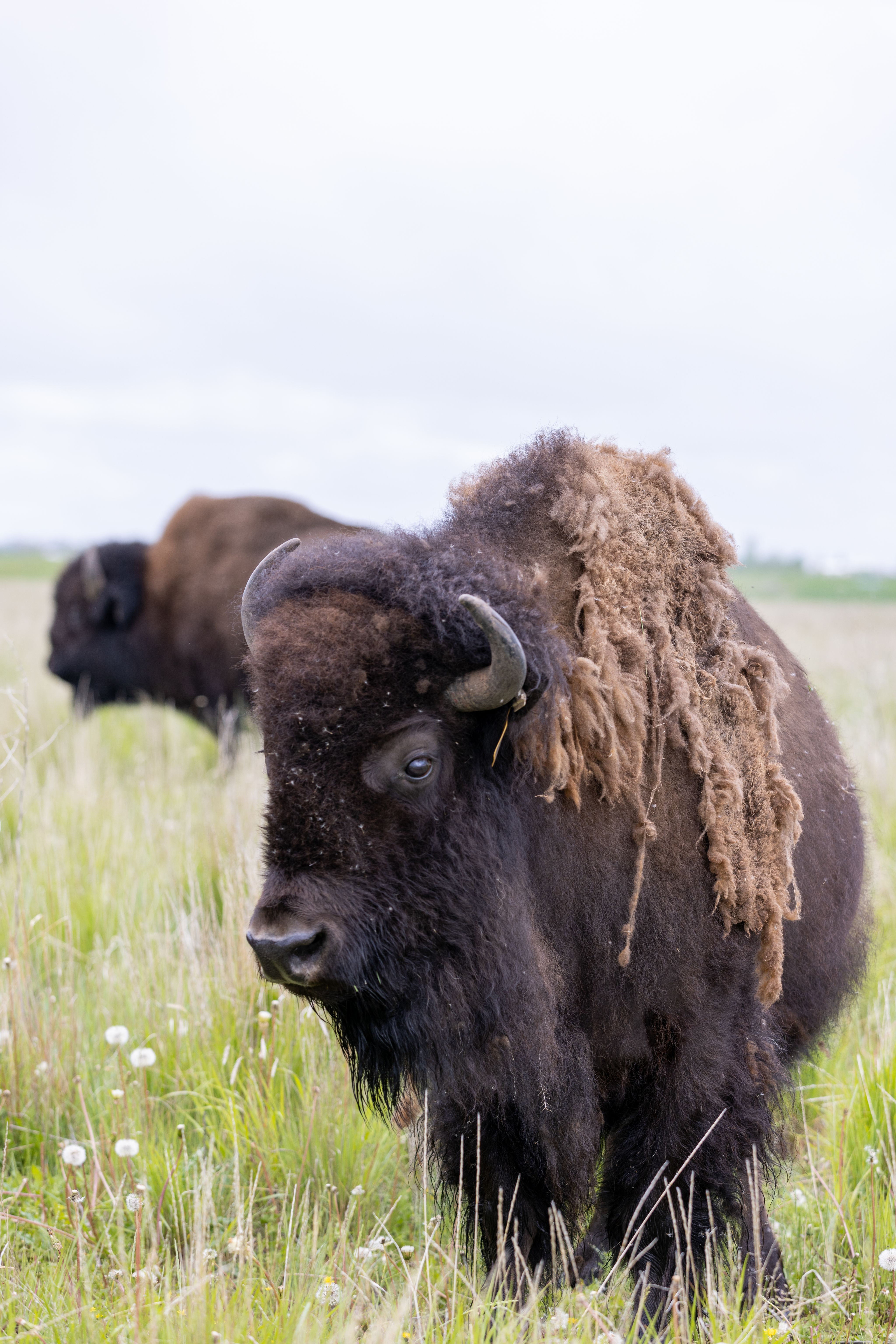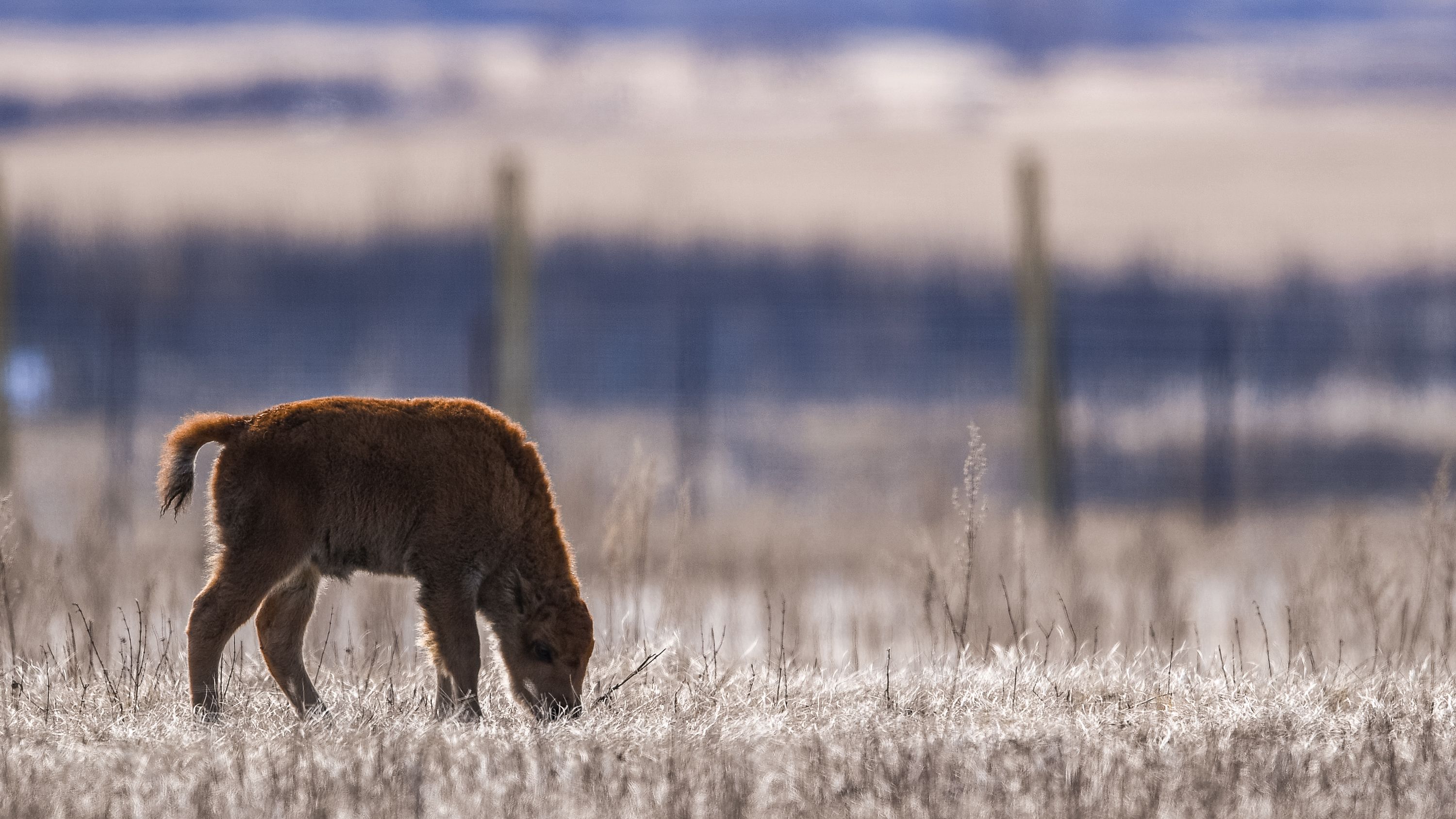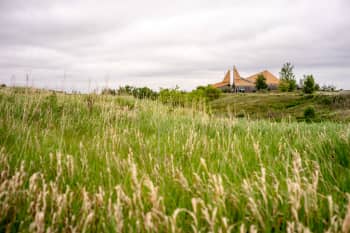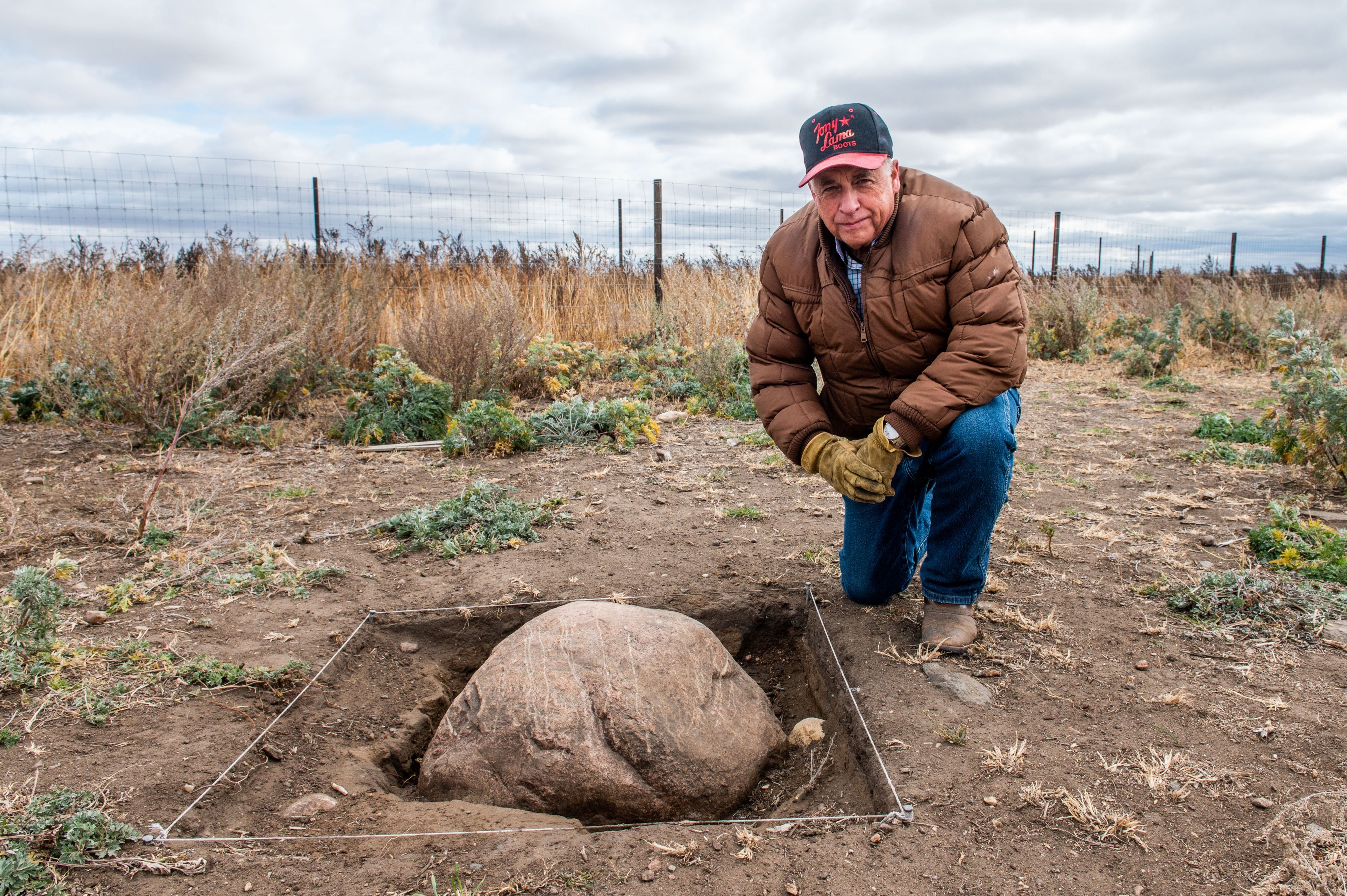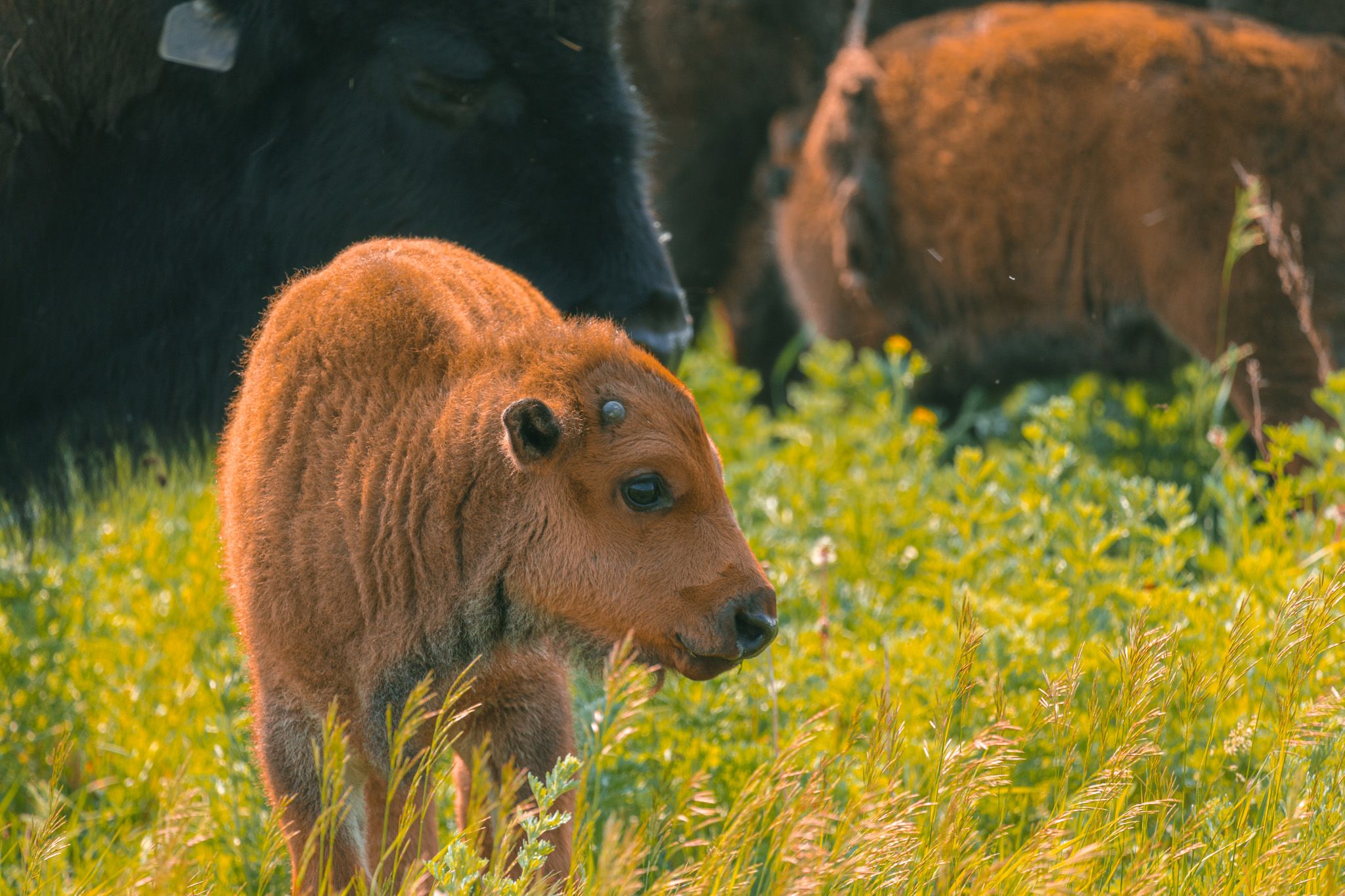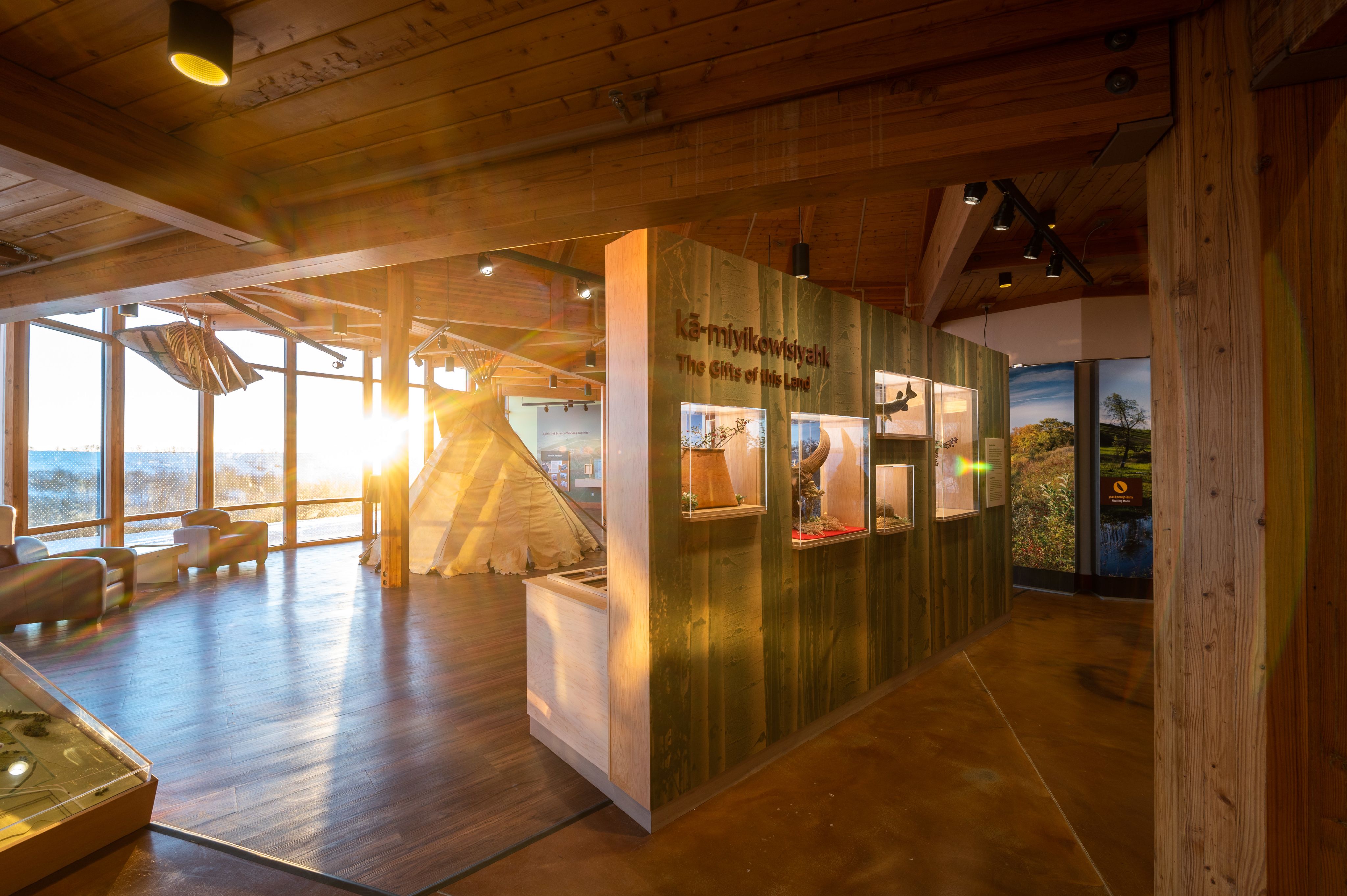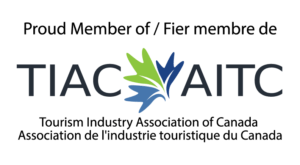Gifts of the Bison
The return of the bison to Wanuskewin Heritage Park is revitalizing the ecosystem, culture and spirit of a community.
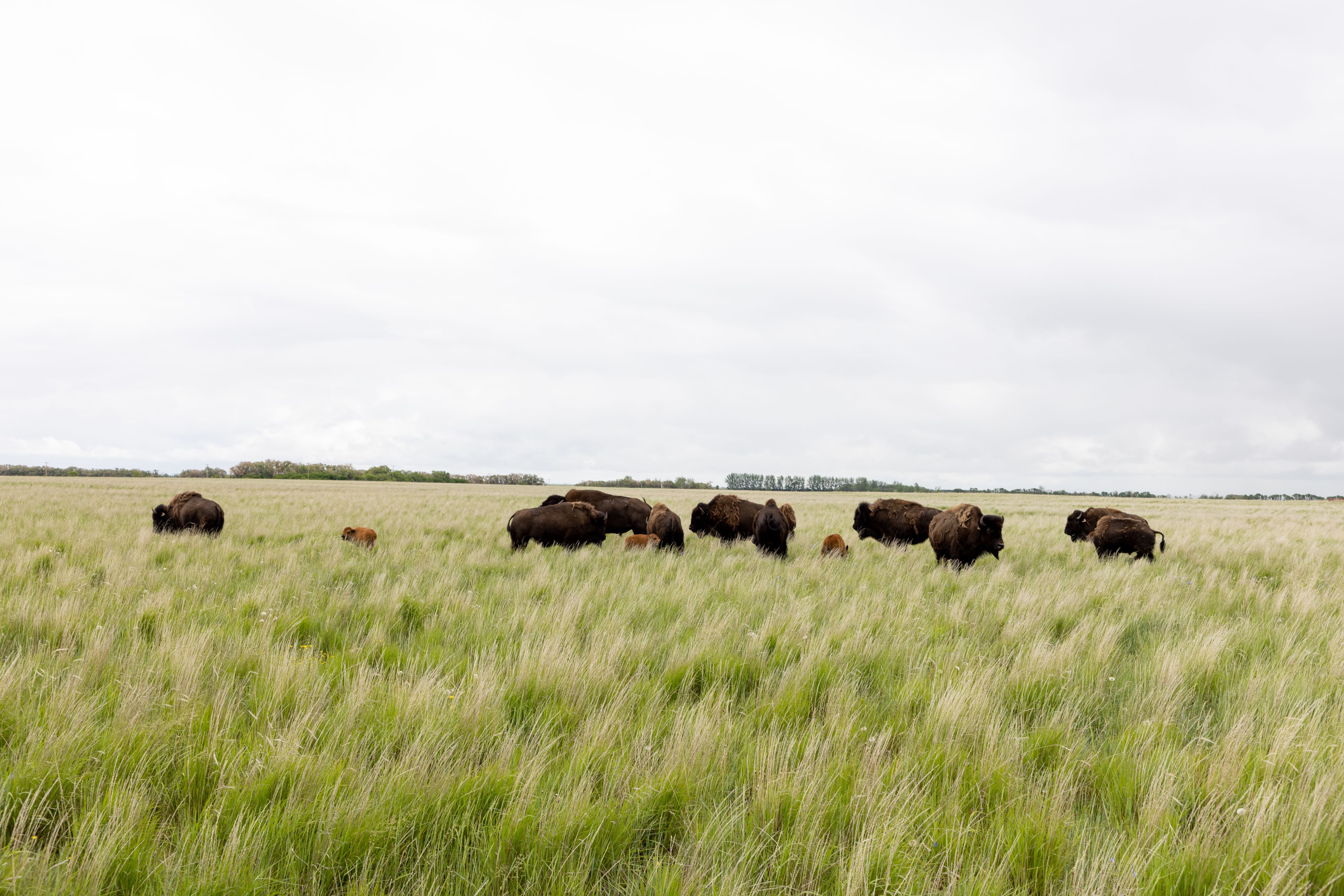
On a cold December morning in 2019, six young bison leapt from a trailer onto the snowy prairie of Wanuskewin Heritage Park, their hooves kicking up the thin layer of snow that covered the ground.
It was a historic moment. For the first time in 150 years, bison were back in the Opimihaw Creek Valley.
To understand the significance of this moment, we have to go back at least 200 years, although we could go back 6,000 and still tell the same story of the Northern Plains Indigenous people for whom bison was life.
Before the 1820s, bison roamed the Great Plains of what is now known as North America in the tens of millions, with habitat that extended far south into the United States. Estimates vary, but it is believed the population was at least 30 million bison at the start of the 19th century.
For the people of the Northern Plains, the bison were more than a resource—they were considered kin, woven into every aspect of life.
For arriving European colonizers looking to settle on the Great Plains, the bison and the Indigenous people who closely followed the herds were a problem. In the 1820s, slaughter of the bison began in earnest, and by the end of the 19th century, only about 1,000 bison remained.
Within one human lifetime, the Great Plains fell silent to the hooves of these ancient animals.
Without them, the prairies changed. The delicate balance of the ecosystem unravelled, and today, the grasslands that once covered the prairies are the most endangered biome in the world.
On a cold December morning in 2019, six young bison leapt from a trailer onto the snowy prairie of Wanuskewin Heritage Park, their hooves kicking up the thin layer of snow that covered the ground.
It was a historic moment. For the first time in 150 years, bison were back in the Opimihaw Creek Valley.
To understand the significance of this moment, we have to go back at least 200 years, although we could go back 6,000 and still tell the same story of the Northern Plains Indigenous people for whom bison was life.
Before the 1820s, bison roamed the Great Plains of what is now known as North America in the tens of millions, with habitat that extended far south into the United States. Estimates vary, but it is believed the population was at least 30 million bison at the start of the 19th century.
For the people of the Northern Plains, the bison were more than a resource—they were considered kin, woven into every aspect of life.
For arriving European colonizers looking to settle on the Great Plains, the bison and the Indigenous people who closely followed the herds were a problem. In the 1820s, slaughter of the bison began in earnest, and by the end of the 19th century, only about 1,000 bison remained.
Within one human lifetime, the Great Plains fell silent to the hooves of these ancient animals.
Without them, the prairies changed. The delicate balance of the ecosystem unravelled, and today, the grasslands that once covered the prairies are the most endangered biome in the world.
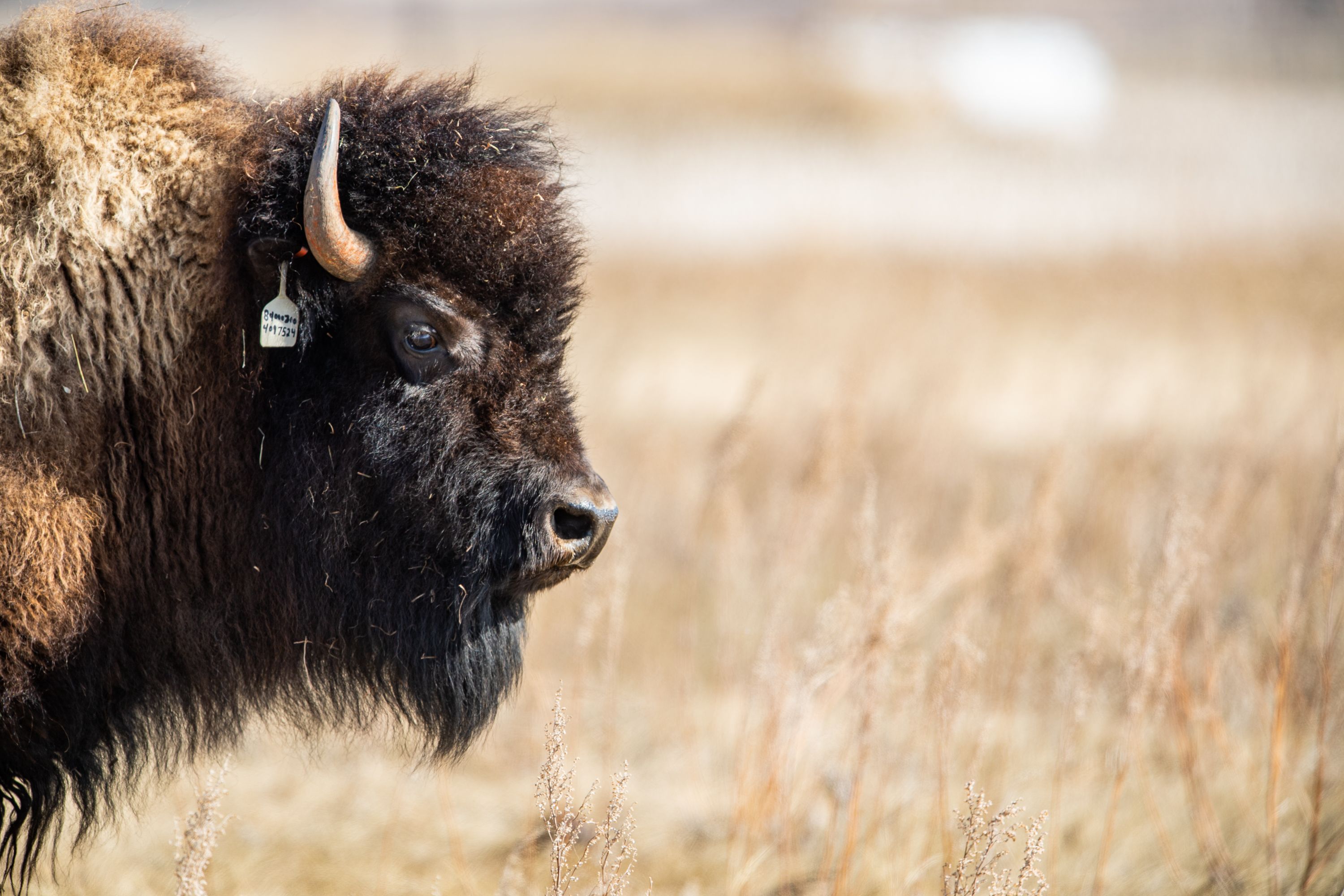
"As Indigenous people, we have such a connection with the bison and we've had that connection for thousands and thousands of years."
Jessie Muhlbach, Senior Interpretive Guide at Wanuskewin Heritage Park

More than a park, Wanuskewin is a living record of thousands of years of Indigenous history. Recognized as a National Historic Site, Wanuskewin holds one of Canada’s longest-running archaeological digs, where Dr. Ernie Walker and his team have uncovered evidence of human presence dating back 6,400 years — tools, bones, and tipi rings that speak to the deep connection between the people and the land.
Bringing bison back had always been part of Wanuskewin’s vision, says Andrew McDonald, co-executive director of the park. In 2017, the park acquired additional land that could house the bison, but it needed time to be restored from farmland to grassland.
"It's not a matter of just putting up some fencing and reintroducing the bison and away you go," Andrew says. "There really is a process of letting that land heal, letting those grassroots networks establish and then bringing the animals back. Once bison are on the land, it is incredible to see just how fast the land begins to return to what it once was naturally."
The six bison that arrived on December 7, 2019, came from Grasslands National Park, descendants of those last few hundred survivors. Just ten days later, another five bison arrived—this time from the United States, with direct genetic ties to the Yellowstone herd. These two lineages had been separated for centuries, scattered in the wake of near-extinction. Their reunion at Wanuskewin was more than symbolic; it was a moment of reconnection, healing, and renewal.
Listen to the video below to learn about the community's hope for the return of the bison:
More than five years have passed since the bison were reintroduced, and the herd now totals 44, with more babies expected this spring.
Photo: Archeological dig at Wanuskewin Heritage Park
Photo: Archeological dig at Wanuskewin Heritage Park

Ecological Effects of the Bison
"Bison are a keystone species," says Ian Hnatowich, Natural Resources Manager at Wanuskewin. "Even just one of these animals can create monumental changes to the surrounding landscape."
Bison grazing patterns prevent any one plant species from dominating, allowing a diverse range of grasses and wildflowers to flourish. Their hooves churn the soil, helping seeds take root. And their wallowing activities (where they throw themselves on the ground on their backs and move around) create compression, allowing water to pool.
"This create little oasis' in the middle of the dry landscape," Ian says. "Which is critical habitat for many species."
Bison waste contributes by fertilizing the land, enriching the soil with essential nutrients that support a web of life, from insects to birds to larger predators.
Without bison, the delicate balance of the prairie begins to unravel. Native grasses struggle to compete against invasive species, biodiversity declines, and the land loses its ability to retain moisture.
Centuries of agriculture, settlement, and the near-eradication of bison have drastically altered the landscape. However, bringing bison back is a step toward rekindling the ecological processes that once defined these plains.
“We don’t have any data about what the land should have been like before we lost the bison, so it's nearly impossible to truly restore it, and often our attempts create what we assume should be there," Ian said.
"The bison helped create the grassland in the first place, and are helping us recreate the conditions to allow the grasslands to naturally recover.”
There's a misconception about the prairie horizon, that it is just a vast emptiness, but that's not the case.
"When you're looking out at the grasslands from a distance, they do not look that exciting," Ian admits.
"It is a lot of brown vegetation just kind of blowing around in the wind. The special, unique, magical parts of the grasslands are when you get really close into that nitty-gritty and you start inserting yourself into those systems — that's when you start to see how biodiverse they are. You start to see all the colours and all the flowers and all of the biological activity."

"The special, unique, magical parts of the grasslands are when you get really close into that nitty-gritty and you start inserting yourself into those systems — that's when you start to see how biodiverse they are."
Ian Hnatowich, Natural Resources Manager at Wanuskewin
Cultural Effects of the Bison
Shortly after the bison arrived in Wanuskewin, the COVID-19 pandemic hit, and the site was closed to visitors, and only critical staff were allowed on the premises.
Dr. Walker was one of the staff members on site. As he stood watching the bison, he noticed a rock with scratches on it protruding from the ground.
"Now 99.99999% of the world would have stepped over that rock and kept walking," Andrew tells me, but this is Dr. Walker, the man who has spent nearly 50 years uncovering some of the most important artifacts of Northern Plains Indigenous cultures in Wanuskewin. He has found tipi rings, a medicine wheel, and even two bison jumps (one of which he named, back in 1983, Newo Asiniak, which is Cree for 'Four Stones').
"So he gets down on all fours and starts to uncover this rock, and discovers that it is not a farming implement that's been dragged across the top or something because it is too imperfect. The lines are too shaky. He immediately identified this as being a petroglyph."
The bison, with their rolling and disturbing of the earth, had uncovered this ancient secret.
In the weeks that followed, Dr. Walker and his staff would uncover three more petroglyphs and even the tool that was used to carve them.
These petroglyphs are estimated to date back anywhere between 300 and 1,800 years, though taken in context with historic events they are likely 1,000 years old. Photo: Wanuskewin Heritage Park
These petroglyphs are estimated to date back anywhere between 300 and 1,800 years, though taken in context with historic events they are likely 1,000 years old. Photo: Wanuskewin Heritage Park
Four petroglyphs, carved on four stones, pointed toward the Buffalo Jump that had been named Four Stone decades before.
"The kicker to all this is that for 41 years, archaeological surveying has happened out here," Andrew says. "Tens of thousands of hours of research have been done on this land. There have been stories written about it, academics coming out, students studying all of this. But it wasn't until the bison revealed that rock that everything else kind of started to fall into place."
Photo: Archeological dig at Wanuskewin Heritage Park
Photo: Archeological dig at Wanuskewin Heritage Park
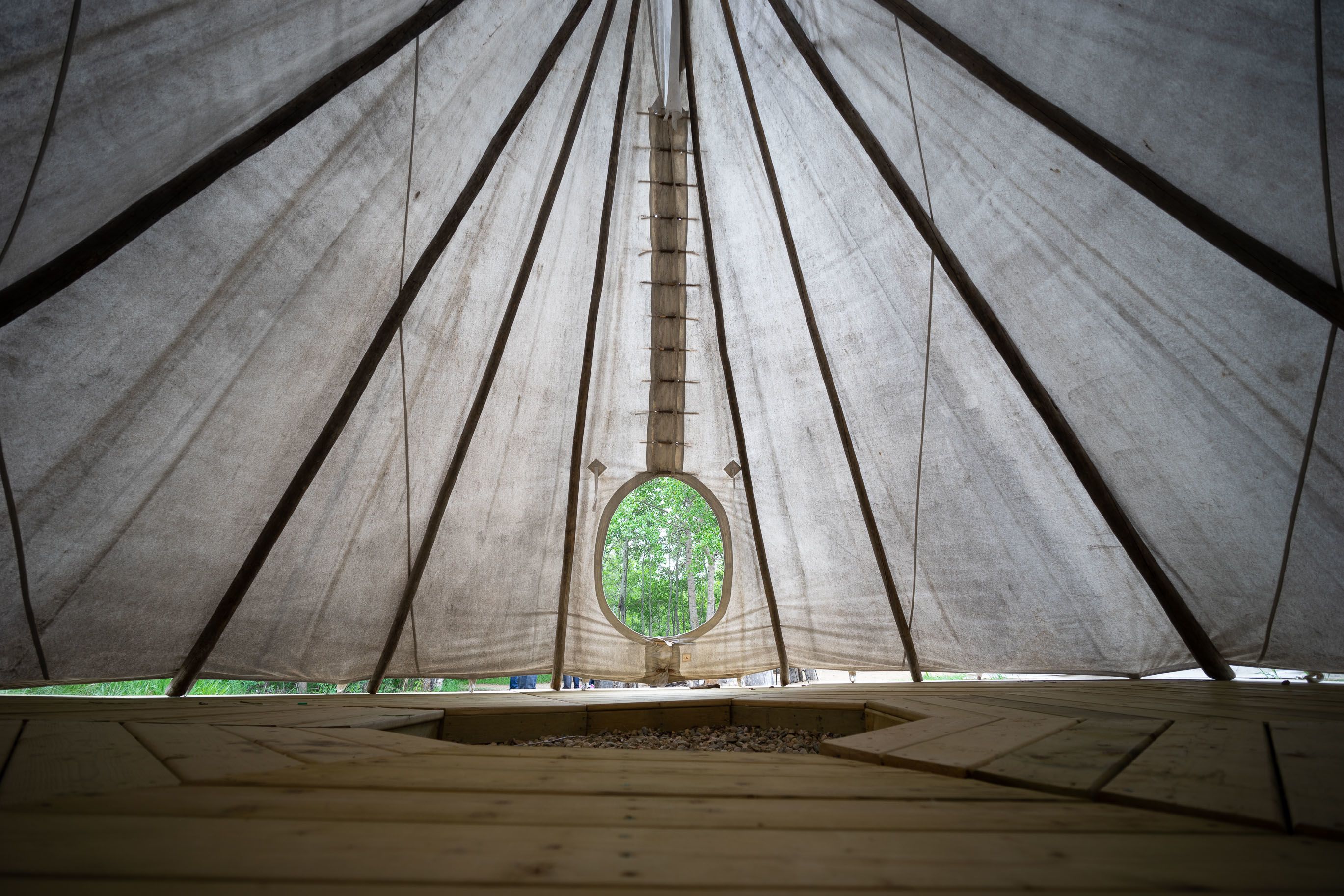
Cultural Effects of the Bison
Shortly after the bison arrived in Wanuskewin, the COVID-19 pandemic hit, and the site was closed to visitors, and only critical staff were allowed on the premises.
Dr. Walker was one of the staff members on site. As he stood watching the bison, he noticed a rock with scratches on it protruding from the ground.
"Now 99.99999% of the world would have stepped over that rock and kept walking," Andrew tells me, but this is Dr. Walker, the man who has spent nearly 50 years uncovering some of the most important artifacts of Northern Plains Indigenous cultures in Wanuskewin. He has found tipi rings, a medicine wheel, and even two bison jumps (one of which he named, back in 1983, Newo Asiniak, which is Cree for 'Four Stones').
"So he gets down on all fours and starts to uncover this rock, and discovers that it is not a farming implement that's been dragged across the top or something because it is too imperfect. The lines are too shaky. He immediately identified this as being a petroglyph."
The bison, with their rolling and disturbing of the earth, had uncovered this ancient secret.
In the weeks that followed, Dr. Walker and his staff would uncover three more petroglyphs and even the tool that was used to carve them.
These petroglyphs are estimated to date back anywhere between 300 and 1,800 years, though taken in context with historic events they are likely 1,000 years old. Photo: Wanuskewin Heritage Park
These petroglyphs are estimated to date back anywhere between 300 and 1,800 years, though taken in context with historic events they are likely 1,000 years old. Photo: Wanuskewin Heritage Park
Four petroglyphs, carved on four stones, pointed toward the Buffalo Jump that had been named Four Stone decades before.
"The kicker to all this is that for 41 years, archaeological surveying has happened out here," Andrew says. "Tens of thousands of hours of research have been done on this land. There have been stories written about it, academics coming out, students studying all of this. But it wasn't until the bison revealed that rock that everything else kind of started to fall into place."
Photo: Archeological dig at Wanuskewin Heritage Park
Photo: Archeological dig at Wanuskewin Heritage Park

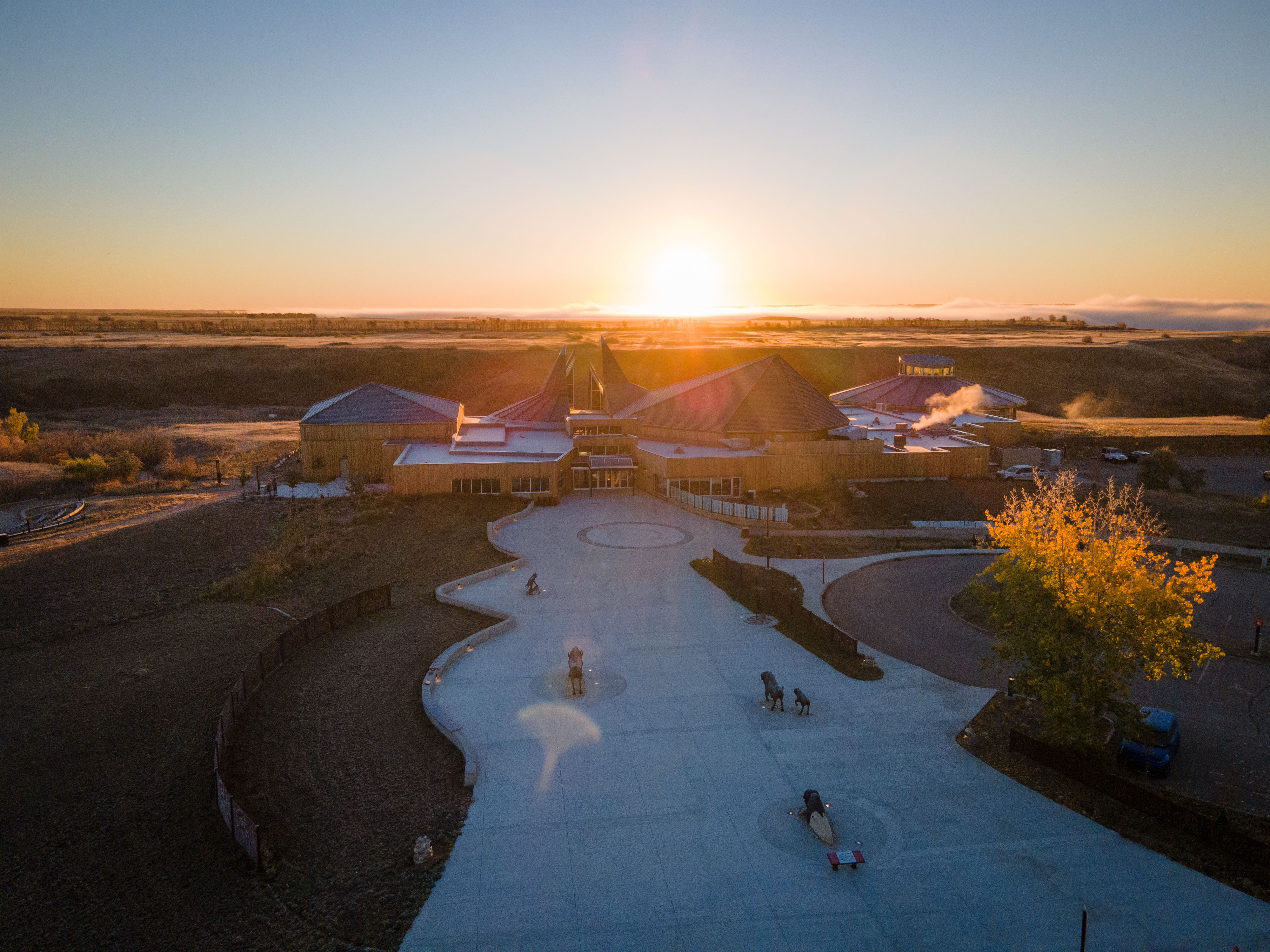
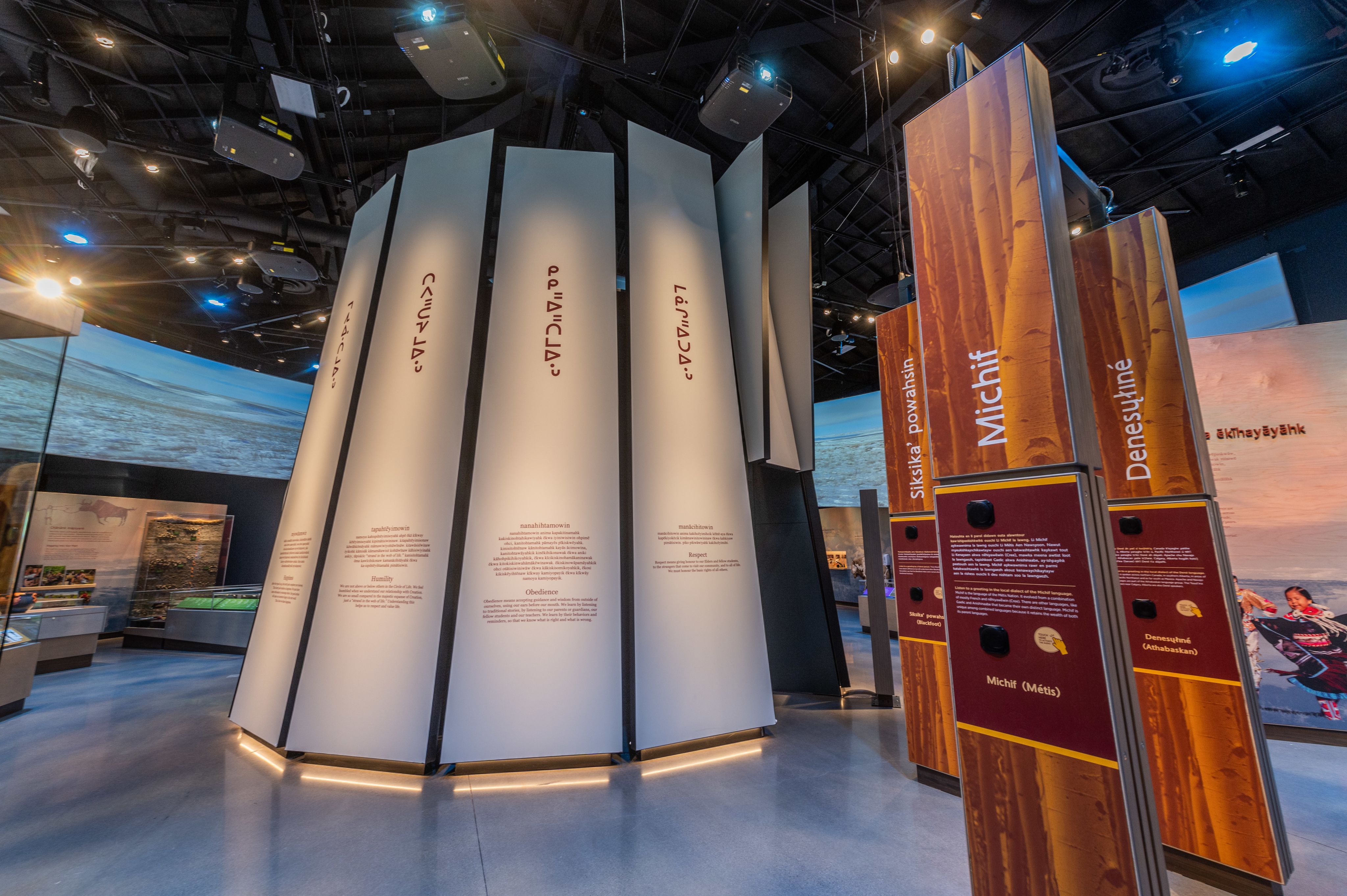
Jessie Muhlbach is a Senior Interpretive Guide at Wanuskewin.
"I feel very lucky that I get to see the bison every day and I feel very honoured that we get to learn from them," Jessie says.
One memorable moment came when a bison baby was born on September 30, the National Day for Truth and Reconciliation, also known as Orange Shirt Day. It came as a surprise, as most babies are born earlier in the year. When they are born, calves have a reddish-orange tinge, Jessie says. "It was born with its own little orange shirt."
A large part of the mandate for Wanuskewin is to educate and celebrate Northern Plains Indigenous culture, and Jessie loves to share her knowledge with guests but also learn from them. The bison being present has opened up many honest conversations between staff and guests. School groups also come through often, and Jessie loves seeing the sparks of joy and interest in children.
"Bison are keystone species here on the prairies. They are stewards of the land. They are taking care of the land and that's such a beautiful thing to follow too," Jessie adds. "As Indigenous people, we have such a connection with the bison, and we've had that connection for thousands and thousands of years. We've worked on that connection. We've developed that connection. We are bringing our family back."
From its beginnings, Wanuskewin was meant to be a place of connection — a bridge between cultures and time. The return of the bison was the fulfillment of that vision, bringing with them the wisdom of the land and the promise of renewal.
"Before the bison arrived, one of our elders, Mary Lee, spoke about how excited she was that the bison were going to be coming back because she could not wait for the gifts that the bison were going to bring. And it stuck with me," Andrew recalls. "I didn't understand it at the time, but I do now."

Canada. Crafted by Canadians.
